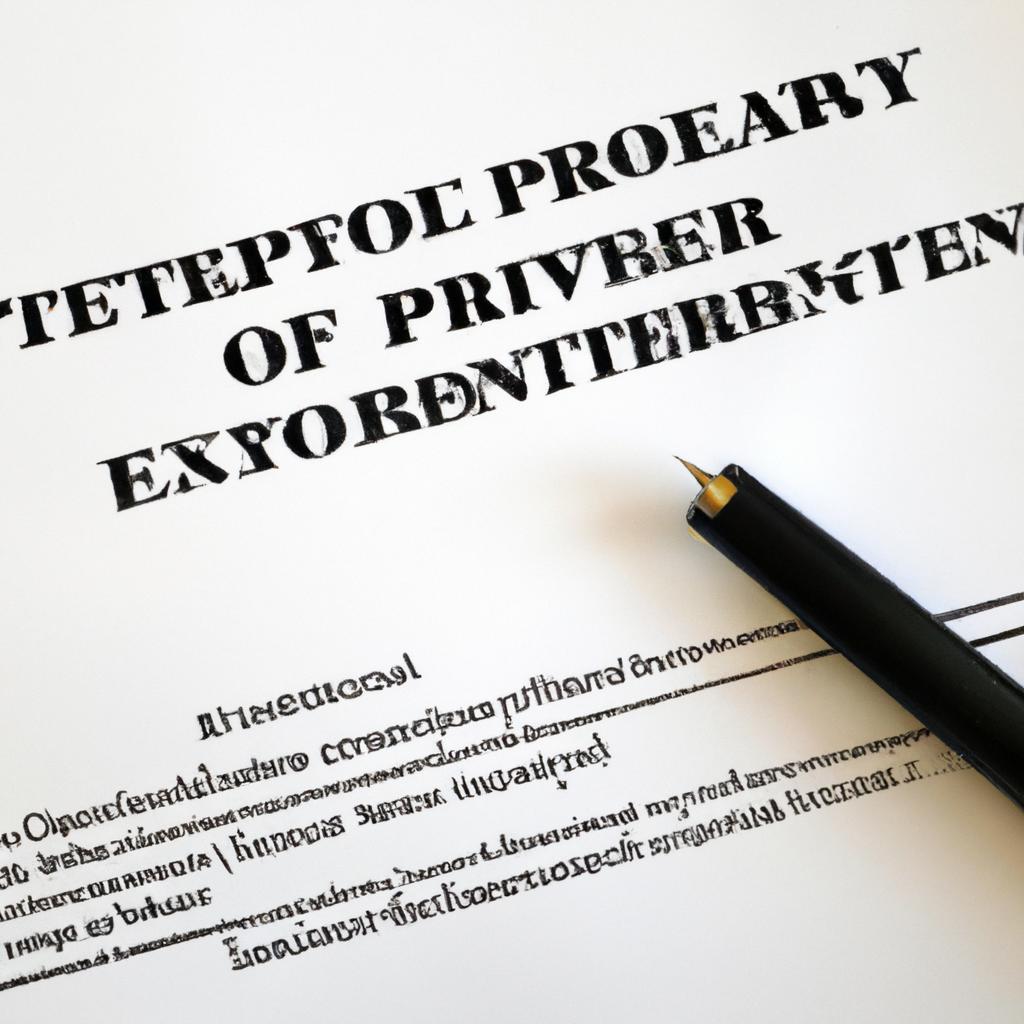When it comes to real estate ownership, a deed represents the legal document that determines who holds title to a property. However, circumstances may arise where one party wishes to remove another party from the deed to a house. This process, known as ”deed removal”, can be complex and require careful consideration of legal requirements. In this article, we will explore the steps involved in removing someone from a deed to a house and the importance of seeking the guidance of experienced legal professionals, such as the Morgan Legal Group in New York City, who specialize in estate planning, probate, elder law, wills, and trusts.
Removing a Co-Owner from a Deed: Legal Process and Considerations
When it comes to removing a co-owner from a deed to a house, there are specific legal processes and considerations that must be followed. This type of situation can be complex and emotional, so it is important to approach it with care and diligence. Here are some key points to keep in mind:
- Evaluate the situation: Before taking any action, it is essential to assess the circumstances surrounding the co-ownership and the reasons for wanting to remove the co-owner from the deed.
- Consult with a legal professional: Seeking advice from an experienced attorney who specializes in real estate law is crucial. They can guide you through the process, provide legal options, and ensure that all necessary steps are taken correctly.

Understanding the Different Methods for Removing Someone from a Property Deed
To remove someone from a property deed, there are several methods that can be utilized. One common way is through a quitclaim deed, where the individual voluntarily transfers their ownership interest to another party. This can be a straightforward and efficient option, particularly in cases where all parties involved are in agreement. Alternatively, a court-ordered partition action can be pursued to force a division or sale of the property, effectively removing the unwanted party from the deed. This process can be complex and may require legal representation to navigate successfully.
Another method for removing someone from a property deed is by establishing a trust and transferring ownership of the property into the trust. This can provide added protection and flexibility, allowing for the removal of a beneficiary from the trust, and therefore the property deed, if circumstances change. It’s important to consult with a knowledgeable attorney to ensure that the chosen method aligns with your specific needs and goals. At Morgan Legal Group in New York City, our experienced team can assist you with understanding the various options available for removing someone from a property deed and guide you through the process with professionalism and expertise.
| Title | Summary |
|---|---|
| Quitclaim Deed | Voluntary transfer of ownership interest |
| Partition Action | Court-ordered division or sale of property |
| Trust Establishment | Transfer of property ownership into a trust |

Consulting with a Real Estate Attorney: Key Steps and Benefits
When it comes to removing someone from the deed to a house, consulting with a real estate attorney is essential to ensure the process is handled correctly and legally. There are several key steps involved in this process, including:
- Reviewing the Deed: The attorney will review the current deed to the property to determine the ownership structure and any restrictions on transferring ownership.
- Obtaining Consent: If the individual being removed from the deed is not willing to cooperate, the attorney will help navigate the legal requirements for obtaining their consent or pursuing alternative options.
Benefits of consulting with a real estate attorney for this process include:
- Legal Expertise: Real estate laws can be complex and vary by jurisdiction, so having an attorney with experience in this area can ensure the transfer is done correctly.
- Protection of Your Rights: An attorney can help protect your rights throughout the process and ensure that the transfer is done in accordance with the law.

Drafting a Deed of Conveyance: a Practical Guide for Property Owners
To remove someone from a deed to a house, you will need to follow a specific legal process. First, it is essential to draft a deed of conveyance that clearly outlines the transfer of ownership rights. This document should include the names of both parties involved, the property address, and the specific terms of the transfer. It is crucial to ensure that the deed is properly executed and notarized to be legally binding.
Next, you will need to file the deed with the county clerk’s office where the property is located. This will officially remove the individual’s name from the property deed and transfer full ownership rights to the remaining owner. It is also advisable to consult with a real estate attorney to ensure that all legal requirements are met and to provide guidance throughout the process. By following these steps, you can effectively remove someone from a deed to a house and protect your ownership rights.
Q&A
Q: What is the process for removing someone from a deed to a house?
A: To remove someone from a deed to a house, you typically need to execute a quitclaim deed transferring their ownership interest to the remaining owner.
Q: Can someone be removed from a deed without their consent?
A: No, all parties involved must agree to the transfer of ownership on the deed.
Q: Are there any legal requirements or restrictions when removing someone from a deed?
A: Yes, each state has specific laws and regulations governing property ownership and transfers. It is advisable to consult with a real estate attorney for guidance.
Q: What are the potential consequences of not removing someone from a deed when necessary?
A: Failure to remove someone from a deed can lead to complications in the future, such as disputes over ownership and difficulty selling the property.
Q: Is there a time frame for completing the process of removing someone from a deed?
A: The time frame can vary depending on the circumstances and the cooperation of all parties involved. It is important to follow the necessary steps promptly to avoid any delays.
In Retrospect
In conclusion, removing someone from a deed to a house involves careful planning, legal documentation, and communication. By following the steps outlined in this article, you can navigate this process successfully and alleviate any potential challenges that may arise. Remember, seeking professional advice from a real estate attorney can also offer valuable guidance and ensure that all necessary steps are taken. With patience, diligence, and open communication, you can effectively get someone off a deed to a house and move forward with confidence. Thank you for reading, and best of luck on your journey to property ownership.
 How to Get Someone Off a Deed to a House: A Complete Guide
How to Get Someone Off a Deed to a House: A Complete Guide
There could be various reasons why you may want to get someone off a deed to a house. Perhaps you recently went through a divorce or a breakup, and you need to remove your ex-partner from the deed. Or maybe you are looking to transfer the property to someone else entirely. Whatever the case may be, removing someone’s name from a deed can be a complicated and overwhelming process, especially if you are not familiar with the legal procedures involved. In this comprehensive guide, we will walk you through the steps on how to get someone off a deed to a house in the most efficient and stress-free manner.
Before we dive into the steps, let’s first look at some basic information that you need to know about the deed and its significance when it comes to homeownership.
Understanding a Deed
In the simplest terms, a deed is a legal document that proves ownership of a property and transfers the rights to the said property from one party to another. When you buy a house, the title of the property is transferred to your name through the deed. It contains important information such as the names of all the parties involved, the description of the property, and the legal description of the transfer. There are different types of deeds – general warranty deed, special warranty deed, quitclaim deed, etc. The type of deed you use will depend on various factors, including the type of property, the relationship between the parties, and the state in which the property is located.
Now that we have established what a deed is and its role in property ownership, let’s move on to the steps involved in getting someone off a deed to a house.
Step 1: Understanding the Different Types of Ownership
Before you can remove someone from a deed, it’s crucial to first understand how the property is owned. There are two types of ownership – joint tenancy and tenancy in common. In joint tenancy, both parties own an equal share of the property with the right of survivorship. This means that if one party dies, the other automatically inherits their share of the property. In tenancy in common, each party owns a specific percentage of the property, and if one party dies, their share goes to their heirs, not the other owner.
Step 2: Reviewing the Current Deed
The next step is to review the current deed and make sure it reflects the ownership type correctly. If necessary, you can update the deed to ensure the correct ownership type before moving on to the removal process. This can be done by contacting a real estate attorney or your county’s register of deeds office for guidance on what steps to take to update the deed.
Step 3: Seek Consent from the Other Party
If you and the co-owner are on good terms, the easiest and least complicated way of getting someone off a deed is by seeking their consent. This will require the co-owner to sign a quitclaim deed, which gives up their interest in the property and transfers it back to you. This process will be more efficient and cost-effective if both parties are in agreement and working together. However, you should also be aware that a quitclaim deed offers no guarantee that the property is free of liens and encumbrances, so it’s essential to do your due diligence before signing any papers.
Step 4: Buy Out the Co-owner’s Interest
If the co-owner is not willing to sign a quitclaim deed or the situation is more complicated, another option is to buy out their interest in the property. This means compensating the co-owner for their share of ownership. The compensation amount will depend on various factors such as the current market value of the property, the initial investment, and any payments made towards the mortgage.
Step 5: Utilize a Partition Action
If buying out the co-owner’s share is not feasible, and they are not willing to sign a quitclaim deed, you can file for a partition action. This is a legal process that involves seeking a court order to force the sale of the property, and the proceeds will be divided between the parties. This option should only be used as a last resort as it can be costly and time-consuming.
Step 6: Updating the Deed
Once you have successfully removed the co-owner from the deed, you will need to update it with the new information. This includes removing the co-owner’s name, adding any new owners, and updating the type of ownership if necessary. Contact a real estate attorney or your county’s register of deeds office for assistance with this process.
In conclusion, getting someone off a deed to a house can be a complicated process, but with proper understanding and guidance, it can be done successfully. Remember to always seek expert advice and legal assistance to ensure that you are following the correct procedures and protecting your interests. By following the steps outlined in this guide, you can navigate the process more efficiently and smoothly, allowing you to move forward with your homeownership journey.

